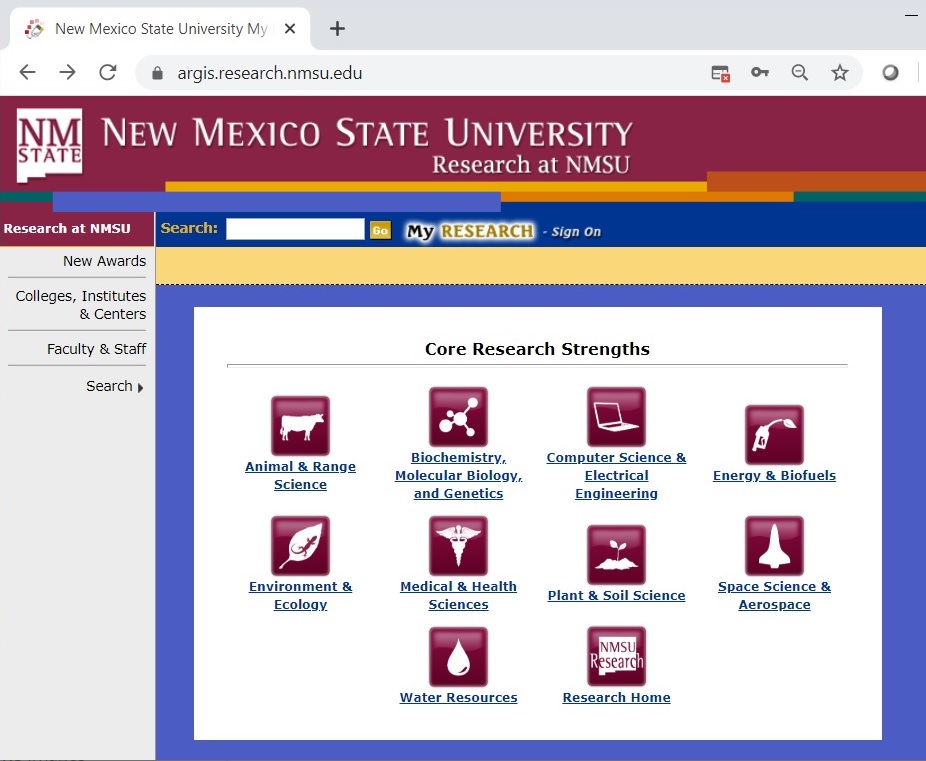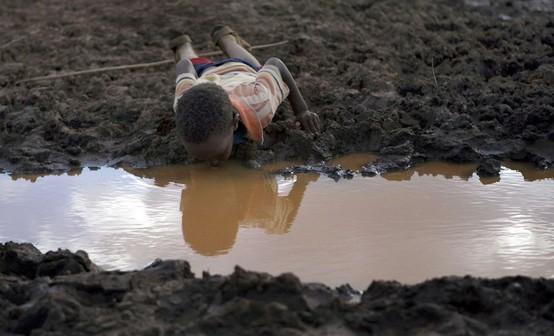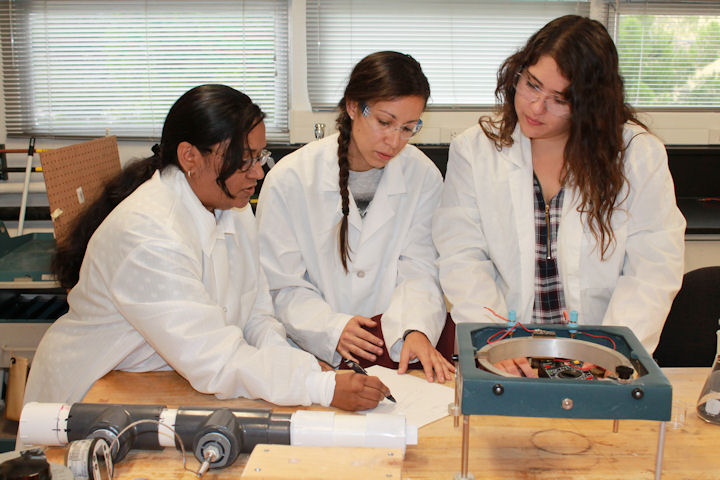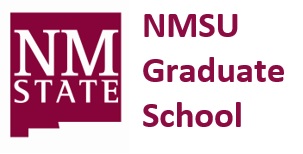
Return to ResearchBy Luis Cifuentes, Vice President for Research and Dean of Graduate School On March 23, 2020, a Public Health Emergency Order closed all businesses and non-profit entities in New Mexico except for those deemed essential. Most of us in the research, scholarship and creative activity community at NMSU were already observing Governor Lujan-Grisham’s Stay-at-Home order. Laboratories, work spaces and offices were restricted to faculty and staff who provided essential/critical functions. No one, particularly graduate and undergraduate students, was allowed on campus unless they met the following exceptions, most requiring a waiver approved by a director or department head, dean, and the VPR:
To date, over 100 waivers have been approved representing close to 300 faculty, students and staff. Expecting the Governor will lift the Stay-at-Home order May 15, 2020, a working group convened last week to tailor a phased approach to scale-up numbers of persons performing research, scholarship and creative activity on campus. They will use the draft Principles and Framework Guiding a Phased Approach to Restarting University Research Activity developed by UC Berkeley partnering with VCRs/VPRs from the UC system and APLU. As you can see from the chart on pp. 9-10, NMSU is in Phase 2, preparing to move to Phase 3. Following the recommendation of Professor Kathryn Hanley who is on the working group, the Return to Research plan will be built on three pillars:
and driven by the health and safety of faculty, students, and staff. They will also adhere to the guiding principles proposed by APLU Council on Research:
The past week was replete with news reports that the COVID-19 pandemic will be with us for two more years at least. Moreover, we will certainly face new pandemics. The plan to Return to Research should, therefore, be sustainable and anticipate an uncertain future. To that end, it must be multi-pronged, phased, flexible, data-driven and technologically savvy. The promise of emerging technologies, for example web-based temperature monitoring, digital contact tracing and telemedicine, must be investigated. It is incumbent on us to facilitate such studies and this is the time to do so. We are, after all, lifetime scholars. |
|
Coronavirus and Human Subject ResearchBy Michelle Gavin, Research Integrity Coordinator, Research Integrity and Compliance (RIC) Given the current COVID-19 outbreak, investigators should consider whether at any point their research procedures should be revised to limit personal contacts, for example by reducing the frequency of in-person visits or replacing in-person interviews with telephone or Internet contacts. Whether and when this may be advisable will vary depending on your protocol and the subjects with whom you are working. We want to remind you that while the federal regulations that guide our oversight of research require that we review revisions to protocol before they are implemented, there is one important exception, “where necessary to eliminate apparent immediate hazards to the human subjects.” 21 CFR 56.108(a)(4). Should you determine that changes in your procedures are required, you can implement them immediately, without prior notice to or approval from the IRB. You will need to ensure that you are not introducing other risks, and you may need to ask subjects to sign revised informed consent forms. All changes should be reported to the NMSU Institutional Review Board (IRB) via email within 48 hours, and a protocol modification form should be submitted to the IRB within 5 business days. Please include copies of any new or revised subject-facing materials with the changes clearly highlighted in both the email and protocol modification form. As a reminder, researchers must ensure that they are not endangering the safety of participants in the current pandemic. Please contact us if you have any questions at 575-646-7177 or via email at ovpr@nmsu.edu. |
|
Importance of ARGIS DataBy Alisha Giron, Assistant VP, Research Administration The Academic Research and Grant Information System (ARGIS) is utilized by NMSU’s research community to track proposal submissions, awards received and to monitor/archive deliverable requirements. The Office of the Vice President for Research (OVPR) provides various ongoing reports to the Board of Regents, Chancellor Arvizu and President Floros based on data derived from ARGIS. It is imperative for principal investigators (PI) and College/Unit research administrative staff to enter all Proposals into ARGIS to ensure accurate reporting data. All too often, proposals are not included in reports because ARGIS records are not routed and approved by College/Unit staff and supervisors in a timely manner. NMSU has several discrete software applications that require data entry after-the-fact instead of in real time. Enterprise systems are an ongoing discussion in OVPR leadership as our strategic plans and budget forecasts take shape. |
|
Feedback from NMSU Researchers Sought for IRB SurveyBy Michelle Gavin, Research Integrity Coordinator, RIC The NMSU Institutional Review Board is seeking feedback from researchers (faculty, staff and students) who include human participants in their research efforts. If you have experience with the NMSU IRB as a principal investigator, co-investigator, research assistant or any other research role, please take a few minutes to complete the survey at https://chssnmsu.az1.qualtrics.com/jfe/form/SV_3yKdwlBPbVLBlnn. The survey assesses experiences, attitudes and perceptions of IRB processes, the Maestro Review System, and the perceived needs for IRB training. Participation in this survey is anonymous and should take 15-30 minutes to complete. Please let us know if you have any questions. Call 575-646-5461 for more information. |
|
NSF's New Requirements for Developing Biographical Sketches and Current and Pending Support DocumentsBy Hamid M. Rad, Sr. Proposal Development Specialist, RAS National Science Foundation (NSF) requires applicants to utilize SciENcv or the NSF Fillable PDF to create biographical sketches and current and pending support documents beginning with proposals due on June 1, 2020. This means Research Administrators will rely on our applicants for creating these documents. Accessing SciENcv requires logging in using personal NSF IDs, but fillable NSF forms are available online. To access NSF Fillable PDF for biographical sketches are available at https://www.nsf.gov/bfa/dias/policy/nsfapprovedformats/biosketch.pdf. Similarly, the fillable forms for creating current and pending could be accessed at https://www.nsf.gov/bfa/dias/policy/nsfapprovedformats/cps.pdf We would like to remind our applicants that the “Appointments” section of biographical sketches must include any titled professional or institutional position even if they are not receiving funding for it. Also, “Synergistic Activities” may not list multiple examples to describe a single activity. In addition, current and pending supports do not need to include projects on which applicants have zero effort. However, they should include information about funds that run through institutions or provided to them directly. On Friday, May 1, the Office of the Vice President for Research and Dean of Graduate School held a webinar during which Grants and Contracts Administrator Sarah MacCallum and Assistant Professor of Computer Science Parth Nagarkar demonstrated the process of using SciENcv and NSF Fillable PDF to create compliant biographical sketches and current and pending support documents. The webinar is available online at https://www.youtube.com/watch?v=jnizPhRCw1A&t=119s. For more information please send email to hamid@nmsu.edu. |
|
NMSU Assistant Professor of Mechanical and Aerospace Engineering to Significantly Increase Solar Stills' OutputBy Hamid M. Rad, Sr. Proposal Development Specialist, RAS As the global population grows and temperatures rise, the demand for freshwater increases. The 2012 Intelligence Community Assessment on Global Water Security warned about the lack of adequate drinking water becoming a destabilizing factor by 2040 in countries with insufficient technical ability to solve their water problems. Water scarcity in underdeveloped countries drives their populations to consume unsafe water, increasing the danger of water-borne diseases. Many countries have been turning saline waters, such as the sea waters or brackish waters, into drinking water using desalination techniques. Most developed countries employ Reverse Osmosis (RO), which is highly efficient. However, using RO on a large scale is not feasible for many countries that cannot afford the costs associated with it. People in remote regions without adequate infrastructure resort to less advanced, low-cost, small-scale technologies such as solar stills that use evaporation and condensation to remove impurities from saline water. While solar stills are affordable and do not require electricity to operate, they have considerably low water production outputs, especially compared to other technologies such as RO, thus making them inadequate to support a small community’s demands for drinking water. That is why NMSU’s Assistant Professor of Mechanical Engineering Sarada Kuravi is addressing this issue by developing innovative thermal science-based approaches that have the potential to improve solar stills’ output by 15x. Tell us about yourself, how long you have been at NMSU, your research areas, the courses do you teach. After I finished my PhD in 2009, I joined my postdoctoral adviser’s group, where I was exposed to challenges of developing cost-competitive renewable and alternative energy technologies. I joined NMSU in Fall 2014 as an Assistant Professor of Renewable Energy and Thermal Sciences. I think the research in this field is truly multidisciplinary, and the challenging part of it is that any newly-developed renewable energy technology must be more or at least as affordable as the conventional power technologies. For conducting this research, I started the Renewable Energy and Thermal Systems Laboratory (REThermS Lab) at NMSU. My students work on a variety of projects with a focus on the fundamental thermal science and applied aspects as well as the economics of renewable and clean energy systems, water desalination, alternative energy systems such as hydrogen, building energy, energy consumption in fluid transport, and waste heat recovery with solar thermal energy, thermal energy storage, and thermodynamics as the central subjects. I usually teach thermal science courses such as Thermodynamics and Heat Transfer. For the past three years, I have also been offering a dual senior-level elective/graduate course in the department titled, ‘ME 481: Alternative and Renewable Energy’, wherein I discuss the current state of the art in solar, geothermal, wind, hydro, biomass, and nuclear power technologies from the perspectives of thermal science and engineering, implementation, and economics. Tell us about this project. How does it combine your expertise in renewable thermal energy research with water desalination? Solar stills have many advantages when used for pure water production in rural or remote areas. They are cheap and easy to implement and can be used to produce purified water in a modular fashion. However, the critical issue is the low water production rate. In this project, I am using my prior experience working on concentrating solar power (CSP) projects and addressing this issue by significantly increasing the solar energy input to the still (the solar still) and enhancing the heat transfer process rates at various steps of the distillation process. My collaborators and I have been working on this approach for almost two years now. College of Engineering Mini Grant Program first funded the idea, which enabled us to obtain the preliminary results. The project was later supported by NM-WRRI, which helped us identify a pathway for its successful implementation and to demonstrate the initial feasibility of using CSP for a still. I wrote a proposal to the Bureau of Reclamation which was successful. The award will help us combine all our prior knowledge and pursue a comprehensive demonstration of the idea by including the heat transfer enhancements along with CSP, solar heat recovery and storage, large-scale testing, and economics. Can you tell us about your innovative approach? When diffused sunlight is incident upon a still, water changes phase to vapor by evaporation, and this is what happens in state-of-the-art solar stills, but evaporation is a very slow process. Typically, thermal distillation approaches require a tremendous amount of thermal energy (usually obtained by burning fuels). In our project, we will use a new method to concentrate the solar energy as in a CSP system and focus it onto the saline water in the still. Solar energy is abundant and free. This CSP-based approach will increase the saline water temperature to induce boiling. None of the solar still techniques until now were able to achieve boiling at atmospheric pressures due to the energy-intensive nature of the distillation process. The boiling of the saline water will result in a rapid vapor generation rate. A simple explanation of boiling versus evaporation is the boiling of water in a pan to rapidly produce vapor versus leaving the water in a cup in a room to let it evaporate over time. The vapor condensation rate must match the increased vapor generation rate and is also a focus of this project. A passive heat storage system will be developed for enabling night-time operation. My collaborators are Drs. Pei Xu and Huiyao Wang from Civil Engineering and Drs. Young Ho Park and Krishna Kota from Mechanical and Aerospace Engineering. They work on aspects such as water quality analysis, boiling and condensation heat transfer enhancements, solar thermal storage, and still design and performance testing. The still enhancement techniques that we are pursuing are highly scalable, cost-effective, and together can make this concept competitive, especially in arid and semi-arid regions and in rural or remote areas. What other projects are you working on? I am working on a high-efficient regenerator system for refrigeration applications in space, new materials for roof panel systems, thermal energy storage for buildings, novel receivers for supercritical carbon dioxide power cycle-based concentrating solar power plants, and studying the science of particulate suspensions. The umbrella research theme for all my projects is the same: to increase the thermal and the thermodynamic performance in an application in a cost-effective manner for/with renewable and/or alternative energy systems. These are all excellent projects with enormous positive social impact. Thank you for advancing engineering research and education at NMSU. Dr. Sarada Kuravi can be reached at skuravi@nmsu.edu. |
Tanzanian child drinking unsanitary water. Credit: The Mvula Trust:
|
Staff Spotlight: Sarah MacCallum, MAccBy Hamid M. Rad, Sr. Proposal Development Specialist, RAS Sarah MacCallum is one of RAS GCAs who supports College of Arts and Sciences, College of Business, and the Arrowhead Center. She joined RAS in 2016 and prior to that she was an accountant at Sponsored Projects Accounting (2008-2016). “I find it very rewarding to help the PIs, especially with proposals. I like the fast-paced nature of proposals as well as their variety,” she states. “I hope that I’m helping to make the PI’s job easier so they can focus on their research.” Sarah calls herself a “homebody” who enjoys reading, baking, and knitting for her friends and family. Sarah has a Master of Accountancy from NMSU. To contact Sarah send email to: smaccall@nmsu.edu. |
Sarah MacCallum, Grants and Contracts Administrator, Research Administration Services |
How to Engage DoD Funding Opportunities: A Webinar on May 15Ms. Laura Uttley and Ms. Amber Cassady, government relations experts with Lewis-Burke Associates will hold a webinar on May 15th from 11:00am to noon on how to engage US Department of Defense funding opportunities for academic research. To register for this webinar send email to hamid@nmsu.edu. |
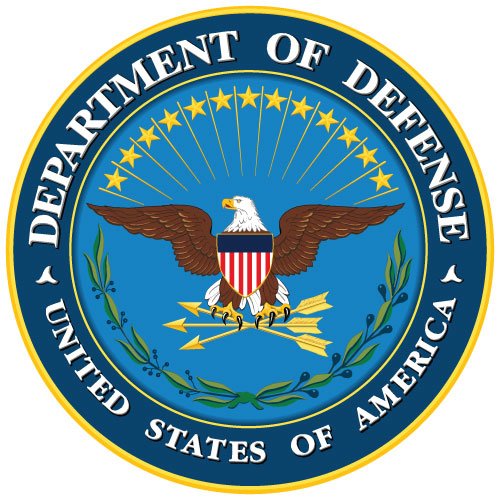 |
NSF Improving Undergraduate STEM Education (NSF 19-540): Webinars on May 12 and May 19The NSF HSI STEM Resource Hub, led by NMSU, will host the JUMPSTART Grantsmanship Webinar Series to guide proposers through the NSF HSI Program solicitation NSF 19-540. May 12, 2020, 3 PM EST: “Finding and Responding to the NSF Call for Proposals” May 19, 2020, at 3 PM EST: “Insights From Recent HSI Awardees” HSI Awardees To register click here. For more information send email to: hsistemhubinfo@nmsu.edu |
|
Attention NMSU Researchers!The Institutional Review Board (IRB ) now requires PI’s to highlight or otherwise clearly indicate all changes ab made to informed consent statements and other uploaded supporting materials (recruitment flyers, study materials) that they are resubmitting after initial review OR submitting as part of a protocol modification application. For more information, please contact Michelle Gavin. |
 |
Limited Submission Funding OpportunitiesThe Office of Research Administration Services lists limited submission funding opportunities at https://limitedsubmission.nmsu.edu. We encourage NMSU faculty and staff to periodically visit the site and if they are interested in any of the opportunities to please inform us by sending email to ls-ras@nmsu.edu. As a reminder, the site is only accessible on campus. Accessing the site using off-campus computers requires first downloading and logging in through NMSU's VPN at https://vpn.nmsu.edu. For more information send email to hamid@nmsu.edu. |
 |
GRADUATE SCHOOL |
|
Life Online at the Graduate SchoolBy Luis Vazquez, Associate Vice President for Research and Graduate Studies, and Denise Esquibel, Associate Dean of Graduate School The Graduate School thanks all the Faculty that have been amazing working with students; offered to help or reached out to other faculty voluntarily; and especially to many of Graduate Program Coordinators that have kept the current students and new students from their programs informed regarding next steps in becoming an Aggie Graduate Student. We have received information from several students that the information has been very helpful and has created a sense of reassurance, along with calmness. Thank you! The following continues: Final exams, degree certification, admissions, dissertation/thesis, registration, changes of semester admittance, programs of study, application/graduation/hold checks, many questions about what to do next by students, faculty and staff, along with many questions regarding advising, courses to take, expectations, university status in relation to COVID-1, and how do find out what forms to fill out, continue on a daily basis. We are busy and constantly communicating with each other to collectively answering many of these questions and making a list of most questions asked from all the calls we receive that we use to inform our Graduate School Website. This has been helpful in developing FAQs, registration information, and information regarding changes due to the pandemic. We have come to realize that we will have to find better ways to make sure that the plan of study or the courses are in STAR, so we make smoother transitions for students leading to graduation. We also continue to explore better ways to work with the Graduate School forms electronically to serve the diversity of needs and level of technology knowledge. This has been challenging, but we are progressing in this area. What we have found most important to our graduate students is our availability to them in their time of need or questions. We are all in this together. The following are a few words that we want to share. It's Hard to Believe As a colleague on one of many ZOOM meetings we had participated in said, it’s hard to believe. So I thought about what has happened and decided to share it. It’s hard to believe that about a month ago, we were all in our offices talking to each and sharing time together at lunch. It’s hard to believe that in an instant a university of our size had to take action and figure out how to work from home. It’s hard to believe that so many people came together to support and help each other move into our new reality. It’s hard to believe that some of us had to inventory what we had in technology equipment to see if we could still communicate with each other in more than one way. It’s hard to believe that we had to become familiar with ZOOM, Microsoft TEAMS, Jabber, Cisco and other ways to answer and receive phone calls. It’s hard to believe that many of us had to become more proficient in Adobe and forms. It’s hard to believe that we were and are being tested at the highest levels of how we handle crisis and each other. It’s hard to believe that we have truly embraced a collective sense of responsibility and accountability for these unprecedented times. It’s hard to believe that at times, we have received support from those that we least expected. It’s hard to believe that all this happened within a month. It’s NOT HARD to believe that this is who we are at NMSU. |
|
|
Questions or comments about NMSU's Research Digest should be directed to Hamid M. Rad at hamid@nmsu.edu.
|
|


